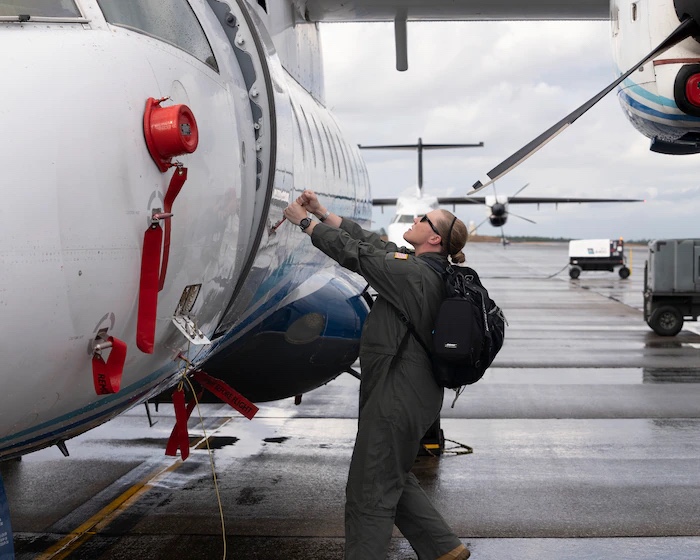ANDøYA SPACE DEFENSE RANGE, NORWAY (AFNS) —
Two Air Force Special Operations Command wings partnered in a total force initiative to conduct the first live-fire demonstration of Rapid Dragon, a long-range palletized munitions system, in the U.S. European Command theater over Andøya Space Defense Range, Nov. 9.

During U.S. Special Operations Command Europe exercise ATREUS 22-4, two MC-130J Commando IIs assigned to the 352nd Special Operations Wing flew the Rapid Dragon package to a Royal Norwegian Air Force training range and deployed it over the Atlantic Ocean. An MC-12W Liberty assigned to the 137th SOW, Oklahoma Air National Guard, used its manned intelligence, surveillance and reconnaissance capabilities to collect and disseminate information about the release.
This is the first time Rapid Dragon has been employed using cargo aircraft in the USEUCOM theater, and precision munitions capabilities for medium-sized or larger cargo aircraft allows U.S. and NATO forces a flexible rapid response option.
“It’s really easily exportable to our partners and allies around the globe that may want to increase the utility of their air force,” said Lt. Gen. Jim Slife, AFSOC commander, during a recent Air and Space Force Association event. “When you look at partner capability, we have a lot of partners around the globe that don’t have heavy bomber-type platforms that would be traditional carriers of those types of munitions, but they’ve got plenty of C-130s proliferated around the world.”
More than 40 countries operate C-130 Hercules, but AFSOC has been the only U.S. Air Force combatant command to demonstrate this system.
“An MC-130J is the perfect aircraft for this capability because we can land and operate from a 3,000-foot highways and austere landing zones whereas a bomber cannot,” said Lt. Col. Valerie Knight, 352d SOW mission commander. “Additionally, a crew qualified to execute heavy equipment airdrop could employ this operationally. After the successful execution of this airdrop, we have now proven we can employ the same weapons system — creating a dilemma for our adversaries. As the only U.S. Air Force Special Operations Wing in Europe, this capability provides our allies, partners and the joint force an additional response option, strengthening our deterrence capabilities in USEUCOM.”
Developing relationships between allies and partners extended to the total force with the inclusion of an Oklahoma Air National Guard MC-12Ws. Two U.S. Air Force pilots and a combat systems officer were part of the MC-12W aircrew to conduct the mission, with support from aircrew flight equipment and special operations communications Airmen.



“The 137th SOW actively seeks out exercises where we can demonstrate our unique capabilities and create relationships with our partners — not just within AFSOC and the total force, but across a multi-national coalition,” said Maj. Murray Ludwig, a 137th SOW combat systems officer. “Thanks to the assistance of our Norwegian allies, our integration into this exercise has been seamless. We were able to demonstrate that our wing can provide top-tier ISR support and a wide array of sustainment capabilities for our joint partners.”
Members of the 137th Mission Sustainment Team also participated, conducting pre-deployment site surveys and airfield assessments. While it is not the first time the team has worked with coalition forces, it is the first time the MST has conducted their mission in a setting realistic to the austere environments they will operate in as they support global SOF operations.
“The multi-capable Airman concept allows us to become completely self-sufficient anywhere in the world,” Ludwig said. “The training our operations Airmen and Mission Sustainment Team are receiving here will be critically important to their future war-fighting potential.
As AFSOC postures its forces for the future fight, developing unconventional, innovative capabilities to protect against near-peer adversaries is critical.
“This rapid roll-on, roll-off capability extends America’s ability to project firepower around the globe,” Knight said. “It doesn’t require any aircraft modifications, making it incredibly easy to employ any place, any time.”
By TSgt Brigette Waltermire, Air Force Special Operations Command Public Affairs
Video by SSgt Izabella Workman



































































































































